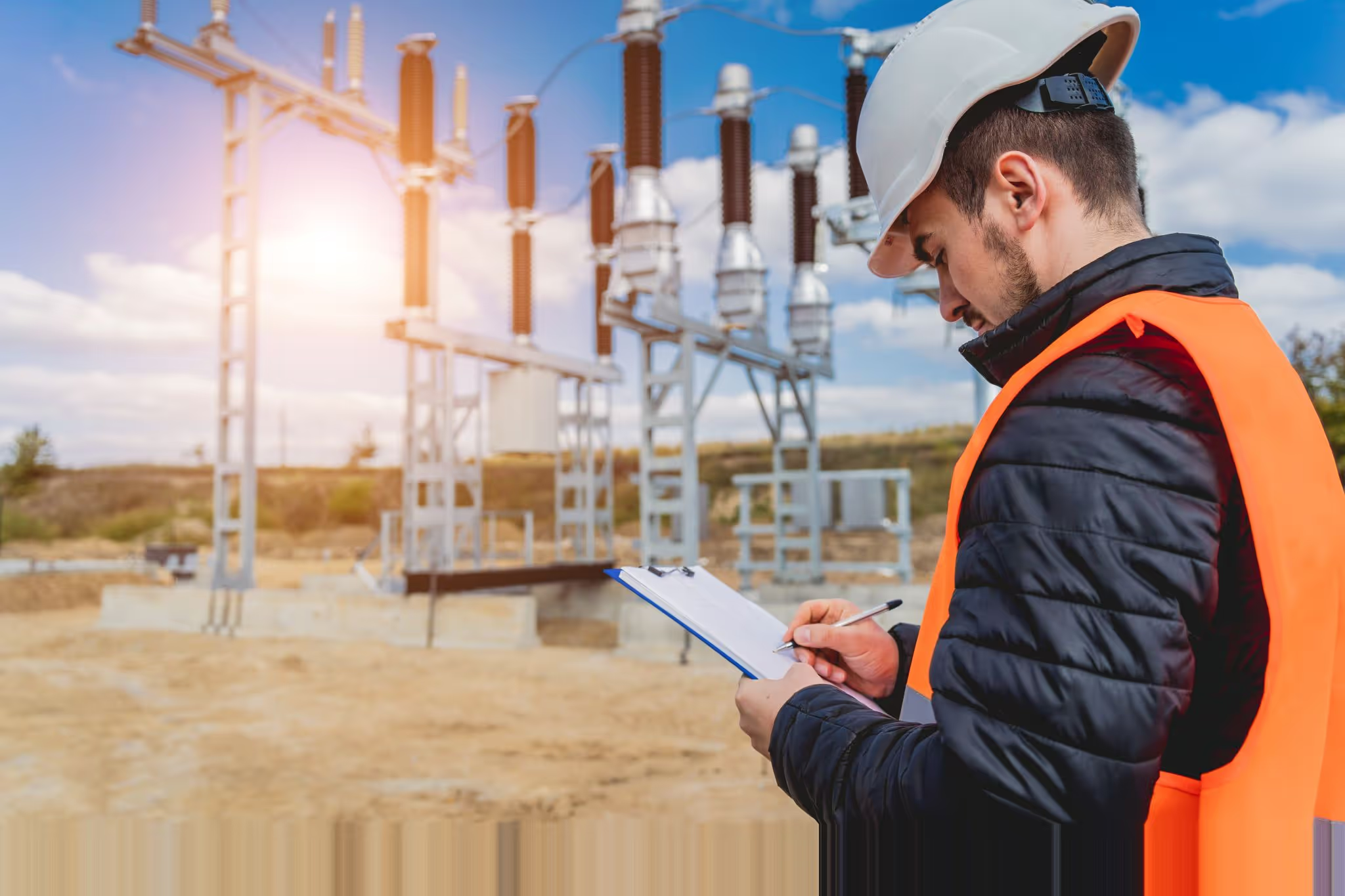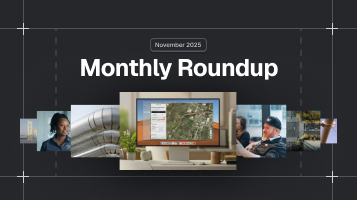Subsurface Utility Engineering (SUE): Everything You Need to Know
Written by

Published on
December 26, 2023


Table of contents
Subsurface Utility Engineering (SUE) plays a crucial role in construction and infrastructure projects by providing accurate location information about subsurface utilities. Using a combination of existing utility records, geophysical location methods, and potholing, SUE professionals identify, map, and manage underground utilities to minimize risks and ensure project success.
In this guide, we'll explore the history of SUE and its current role in construction and infrastructure projects.
Click the links below to jump to what you need:
What is Subsurface Utility Engineering (SUE)?
The significance of SUE in modern construction
The core principles of SUE
SUE methods and techniques
What are the benefits of implementing SUE?
The SUE process in action
Collaboration and communication in SUE
Standards and guidelines for SUE
Future trends in SUE
What is Subsurface Utility Engineering (SUE)?
SUE takes a systematic approach to locating existing utilities—one that relies on a set standard of quality assurance. It combines engineering, geophysics, and surveying techniques to locate and map underground utilities to prevent utility strikes, reduce conflicts, and enhance project planning.
SUE emerged in the 1980s when So-Deep Inc. pioneered the use of geophysical methods to locate utilities. Jim Anspach, PG, DIST.M.ASCE and former Principal of So-Deep, says SUE's standard quality levels emerged from a project for the U.S. Department of Energy. "To comply with their requirements for the project, we had to create a quality standard with four levels," Anspach says on the 4M Utility Strategy Podcast. "Quality level D is a utility that's only visible on a utility record. Quality level C is when there's a few points out there that we can survey and add to the utility record. Quality level B is when we can designate it with geophysics, and quality level A is when we can expose it and visually see it's there."
Why is accurate utility information so important in the planning phase?
Accurate utility information is vital for project planning as it helps avoid costly overruns, project delays, design conflicts, and safety hazards. Incorporating SUE in a project's early stages can help avoid unnecessary utility relocations, providing benefits such as:
- Saving money when relocations can be avoided.
- Reducing delays to the project.
- Avoiding unexpected utility conflicts because accurate charting of utilities is included on the construction plans.
- Reducing risk of utility strikes and enhancing safety.
The significance of SUE in modern construction
Modern construction projects face numerous challenges when working with underground utilities—including inaccurate records, unknown locations, and the potential for strikes. These challenges can lead to costly delays, rework, and safety hazards.
How does SUE addresses challenges and minimize risks?
SUE addresses these challenges by using advanced techniques and technologies to accurately locate and map underground utilities. The SUE process seeks to map all underground utilities before work starts, so a project begins with a comprehensive survey of the area already in place.
To accomplish this, SUE uses a combination of surveying, GIS databases, geophysical detection methods, and minimal excavation to learn the exact location of all utilities. "The original concept of what we were doing—designating, locating and data management—was we wanted to go out and find all utilities within a project limit, whether there were records for them or not," says Anspach, recalling the early days of SUE in the '80s and '90s. "We used geophysics extensively with a lot of search orientations to find unknowns." The results were dramatically better than simply doing records research. "We would generally find 30-40 percent of utilities beyond what the records said."
The core principles of SUE
SUE is based on a standard with four primary levels, known as SUE Quality Levels A, B, C, and D. Each level represents a different degree of utility information and serves a specific purpose in project planning and design.
What are the SUE Quality Levels and what do they mean?
- Quality Level A involves the use of non-destructive methods such as vacuum excavation to accurately locate and map underground utilities.
- Quality Level B identifies utilities using methods that are not invasive, such as Ground-Penetrating Radar (GPR) and other geophysical techniques.
- Quality Level C involves verifying information with surveys on the site. For example, consultants might search for visual evidence of utilities, such as sewer covers.
- Quality Level D is the level with the least confidence level. Consultation of existing utility records and information is all that is needed to reach this level.
Each quality level contributes to a comprehensive understanding of underground utilities and helps mitigate risks.
SUE methods and techniques
SUE utilizes various methods to map and manage underground utilities:
- Utility mapping involves the use of geophysical techniques, such as electromagnetic detection and Ground-Penetrating Radar (GPR), to locate and chart underground utilities.
- Designation is the process of identifying the type and size of utilities.
- Verification involves on-site investigations and limited excavation to confirm the accuracy of utility information.
What are the benefits of implementing SUE?
SUE offers many benefits, including simplified project planning, fewer utility conflicts, and greater overall efficiency. Stakeholders are empowered to make informed decisions during the planning and design stages of a project—avoiding pitfalls and costly mistakes.
Accurate utility information obtained through SUE can yield significant cost savings. Why? Because if crews know where utilities are before they break ground, they can avoid utility strikes, redesigns, and project delays, saving money and effort—and helping to ensure the project is completed on time.
The SUE process in action
Successful implementation of SUE involves a step-by-step process that integrates utility investigations into the overall project workflow:
- Project planning and scoping starts with gathering Quality Level C and D level data, reviewing the proposed project, gathering needed utility records from owners, and plotting utility information.
- The preliminary design stage involves reviewing project limits and surveying the site to gather Quality Level B data.
- The final design stage involves reviewing all project data and identifying places where Quality Level A data is needed, seeking out that data, and integrating all utility information into the project design before construction begins.
SUE promotes job site safety and reduces the risk of utility strikes and accidents by providing stakeholders with reliable utility information. This allows for proper planning, hazard identification, and the implementation of safety measures to protect workers and the surrounding environment.
Collaboration and communication in SUE
Collaboration and clear communication are essential to success when utilizing SUE. Involving utility owners and stakeholders is crucial for obtaining accurate utility information, and fostering collaboration ensures that all parties are aware of the project requirements and can provide valuable insights into utility locations and potential conflicts.
Clear communication between project teams, utility owners, and SUE professionals is also vital for obtaining accurate utility data and ensuring utility coordination. This includes sharing project plans, utility records, and any changes or updates that may affect the project's utility information.
Standards and guidelines for SUE
SUE practices are governed by industry standards and guidelines to ensure consistency and quality in utility investigations. Standards such as ASCE 38-22 (which replaces the older ASCE 38-02) provide guidelines for conducting investigations and outline best practices for utility data collection, mapping, and verification.
While the response to the original ASCE-02 from highway agencies and other organizations was positive, Anspach notes that many organizations failed to fully comply. "Very few people actually read it and followed the steps that were in there," he says. "That's why we [at ASCE] have just released a much more prescriptive process of getting to a quality level." The newly updated ASCE 38-22 was made public in 2022.
Organizations relevant to SUE include the National Utility Contractors Association (NUCA) and the American Society of Civil Engineers (ASCE), which provide guidance and resources for implementation. These organizations also promote adoption of SUE practices to improve project outcomes and safety.
Future trends in SUE
The field of SUE is constantly evolving.
As technology advances, improved geophysical instruments and data analysis techniques will likely enhance the accuracy and efficiency of SUE investigations. And the integration of SUE data with Building Information Modeling (BIM) systems will help to streamline project workflows and improve utility management.
Potential advancements in utility detection include using advanced sensors, artificial intelligence (AI), and machine learning (ML) algorithms to improve detection methods, simplifying interpretation of GPR data, and using LiDAR and GPR to map surface and subsurface infrastructure at one time. Data integration advancements may involve the development of standardized formats for sharing utility information across different platforms and systems.
SUE is a vital component of modern construction and infrastructure projects. By embracing its practices and standards, professionals can ensure the successful and safe completion of their construction projects.
Recent blog posts

Our Newsletter
Join 7k infrastructure professionals
Get monthly insights on ways to build smarter, faster and safer with Utility AI.


.avif)




